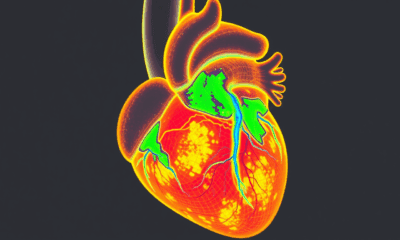While we try to keep things accurate, this content is part of an ongoing experiment and may not always be reliable.
Please double-check important details — we’re not responsible for how the information is used.
Allergy
The Missing Link in Autoimmune Disorders: Researchers Identify Key Protein in Immune Response
Scientists have identified a protein in cells that spurs the release of infection-fighting molecules. The protein, whose role in the immune system had not previously been suspected, provides a potential target for therapies that could prevent over-reactive immune responses that are at the root of several debilitating illnesses.

Allergy
The Hidden Dangers of Fire Smoke Exposure
Smoke from wildfires and structural fires doesn t just irritate lungs it actually changes your immune system. Harvard scientists found that even healthy people exposed to smoke showed signs of immune system activation, genetic changes tied to allergies, and even toxic metals inside their immune cells.
Allergy
The Resilient Enemy: Why Asthma Symptoms Persist Despite Powerful Drugs
Biological drugs have been a game-changer for people with severe asthma, helping them breathe easier and live more comfortably. But researchers at Karolinska Institutet have uncovered a surprising twist: while these treatments ease symptoms, they may not fully eliminate the immune cells that drive inflammation. In fact, some of these cells actually increase during treatment, suggesting the medication is managing symptoms without targeting the root cause. This could explain why asthma often returns when the drugs are stopped, raising questions about how long-term these treatments should be and whether we’re truly solving the underlying problem.
Allergy
Uncovering the Secrets of Urban Allergies: How Environmental Factors Shape Immunity and Increase the Risk of Allergic Diseases
Evidence of a unique T cell may explain why urban children are more prone to allergies than rural children. Differences in the development of the gut microbiome may be an underlying cause.
-

 Detectors3 months ago
Detectors3 months agoA New Horizon for Vision: How Gold Nanoparticles May Restore People’s Sight
-

 Earth & Climate4 months ago
Earth & Climate4 months agoRetiring Abroad Can Be Lonely Business
-

 Cancer4 months ago
Cancer4 months agoRevolutionizing Quantum Communication: Direct Connections Between Multiple Processors
-

 Agriculture and Food4 months ago
Agriculture and Food4 months ago“A Sustainable Solution: Researchers Create Hybrid Cheese with 25% Pea Protein”
-

 Diseases and Conditions4 months ago
Diseases and Conditions4 months agoReducing Falls Among Elderly Women with Polypharmacy through Exercise Intervention
-

 Albert Einstein4 months ago
Albert Einstein4 months agoHarnessing Water Waves: A Breakthrough in Controlling Floating Objects
-

 Chemistry3 months ago
Chemistry3 months ago“Unveiling Hidden Patterns: A New Twist on Interference Phenomena”
-

 Earth & Climate3 months ago
Earth & Climate3 months agoHousehold Electricity Three Times More Expensive Than Upcoming ‘Eco-Friendly’ Aviation E-Fuels, Study Reveals





























